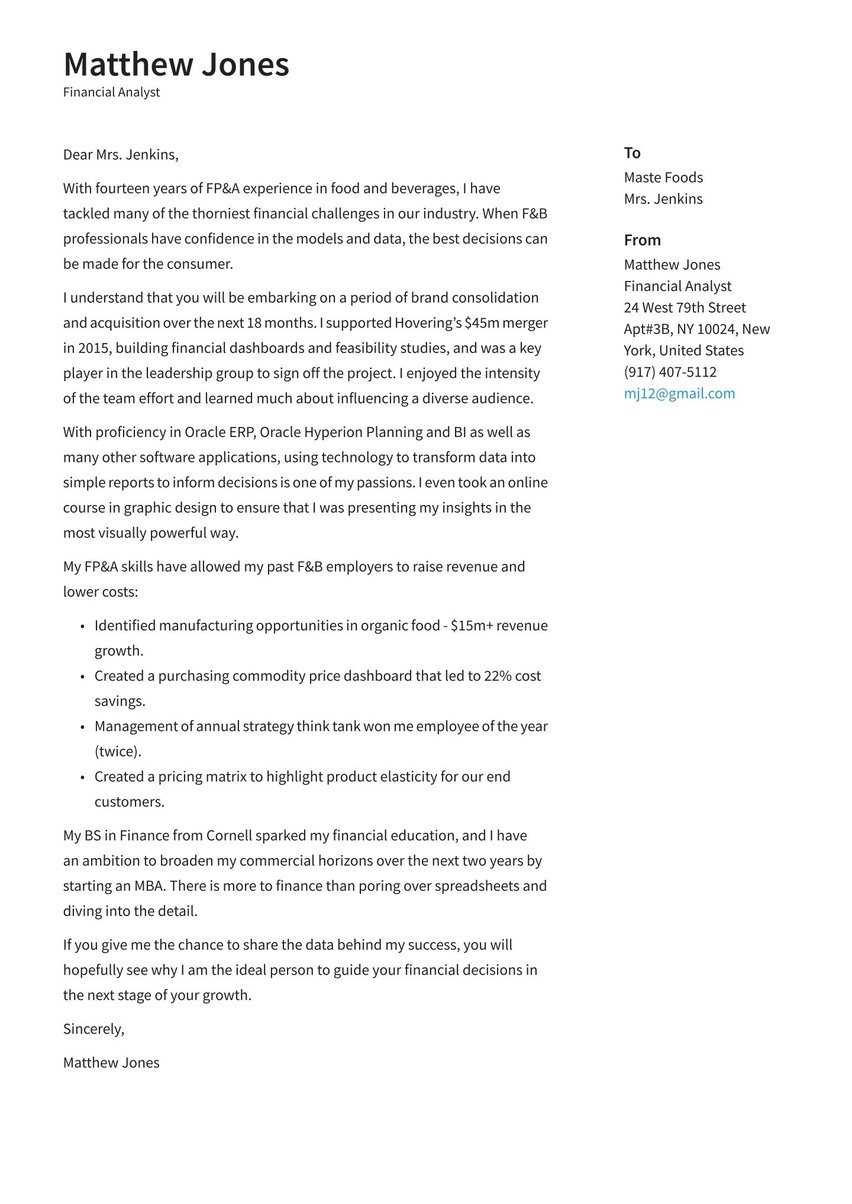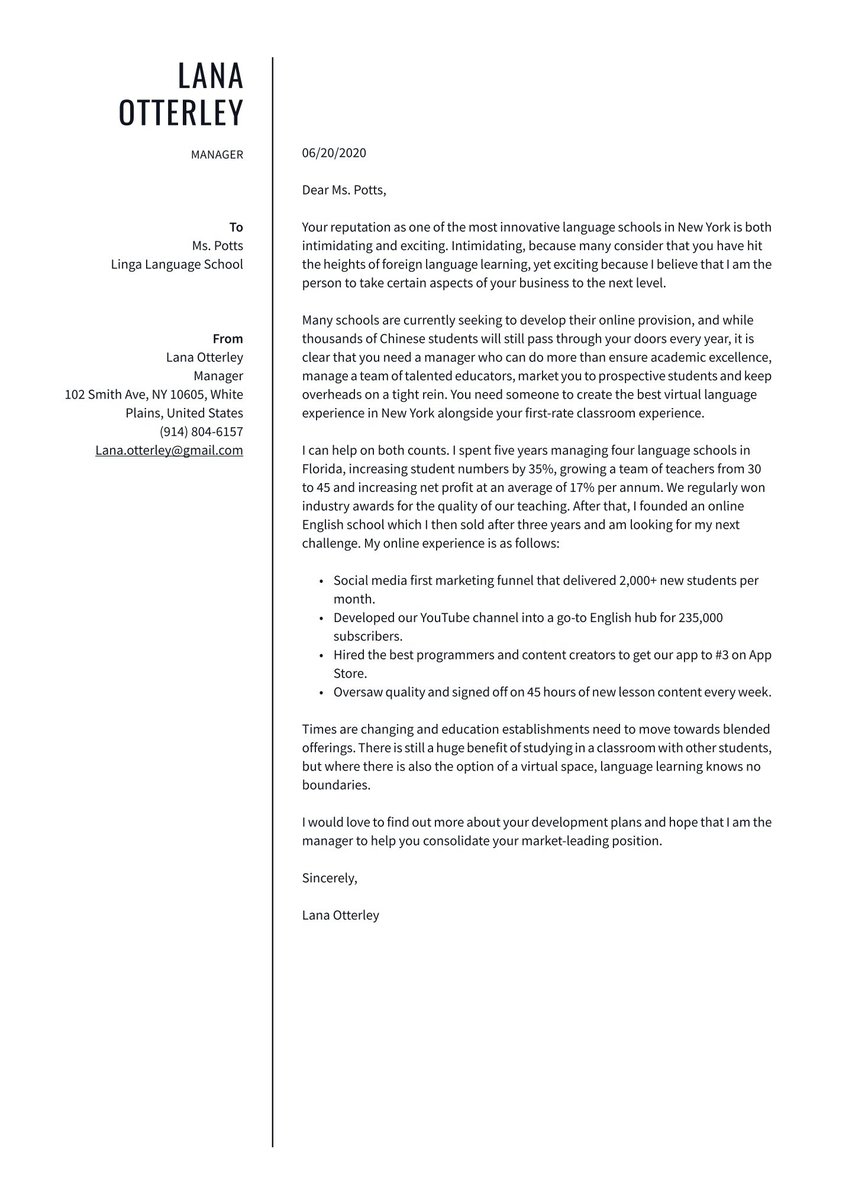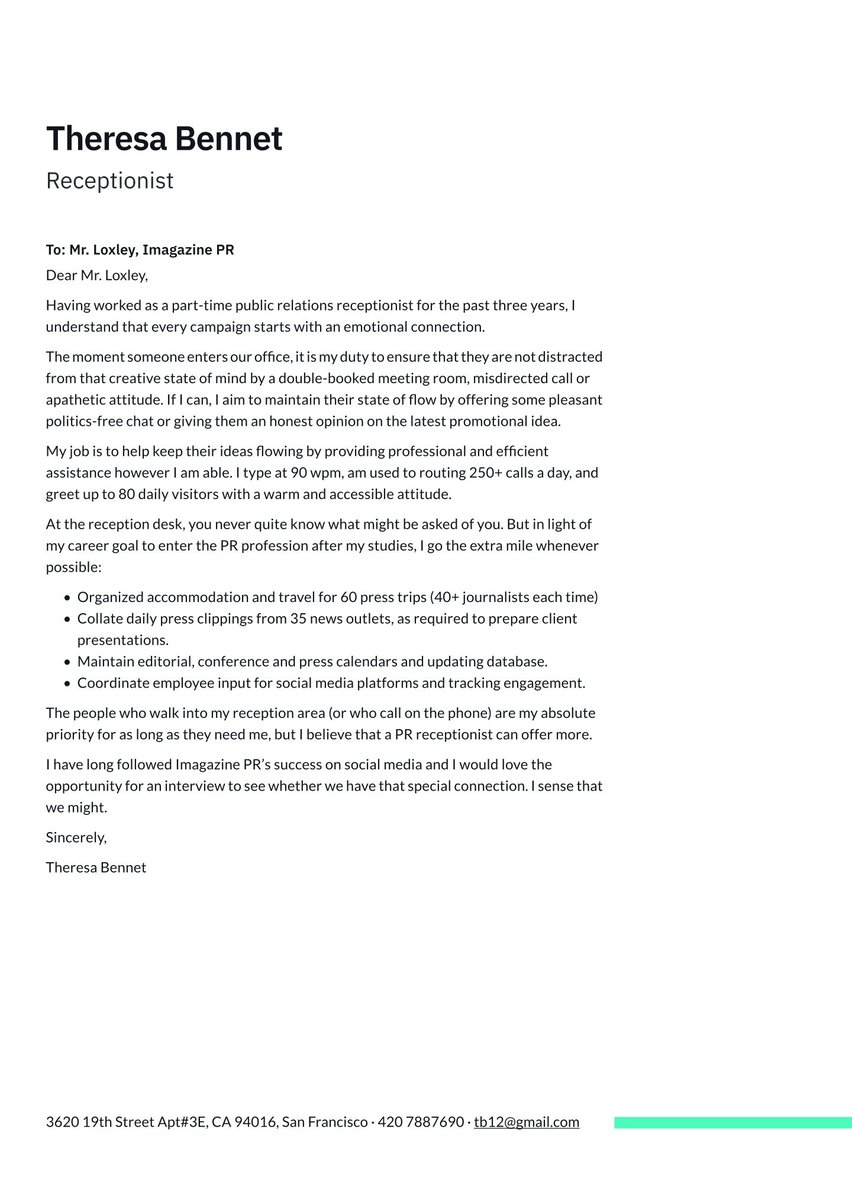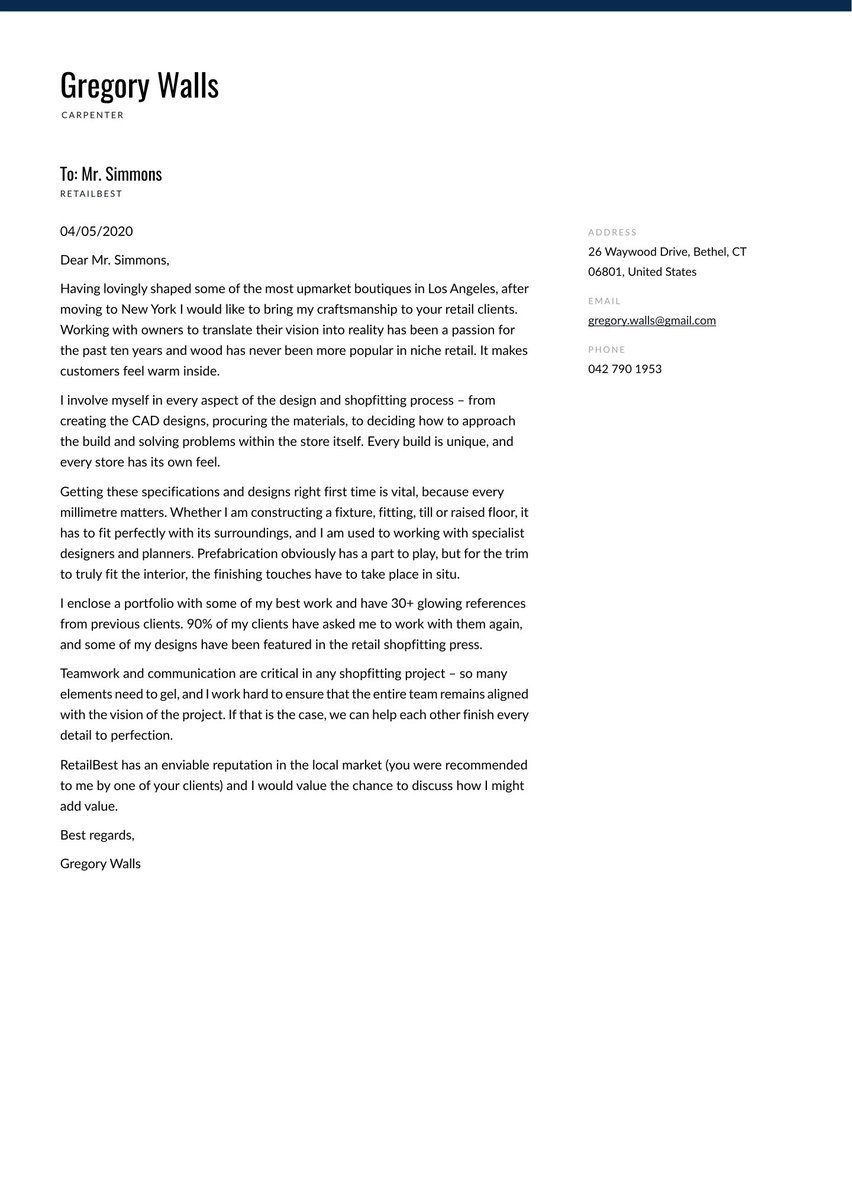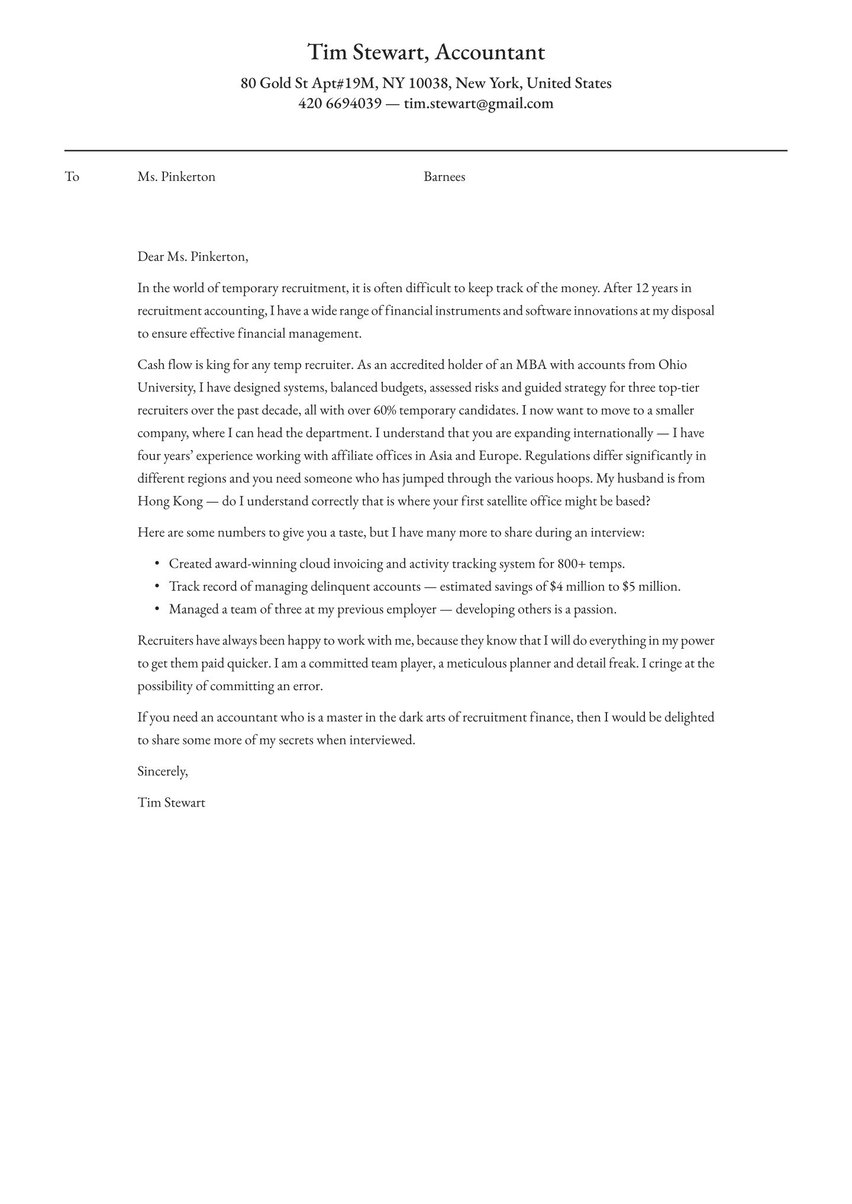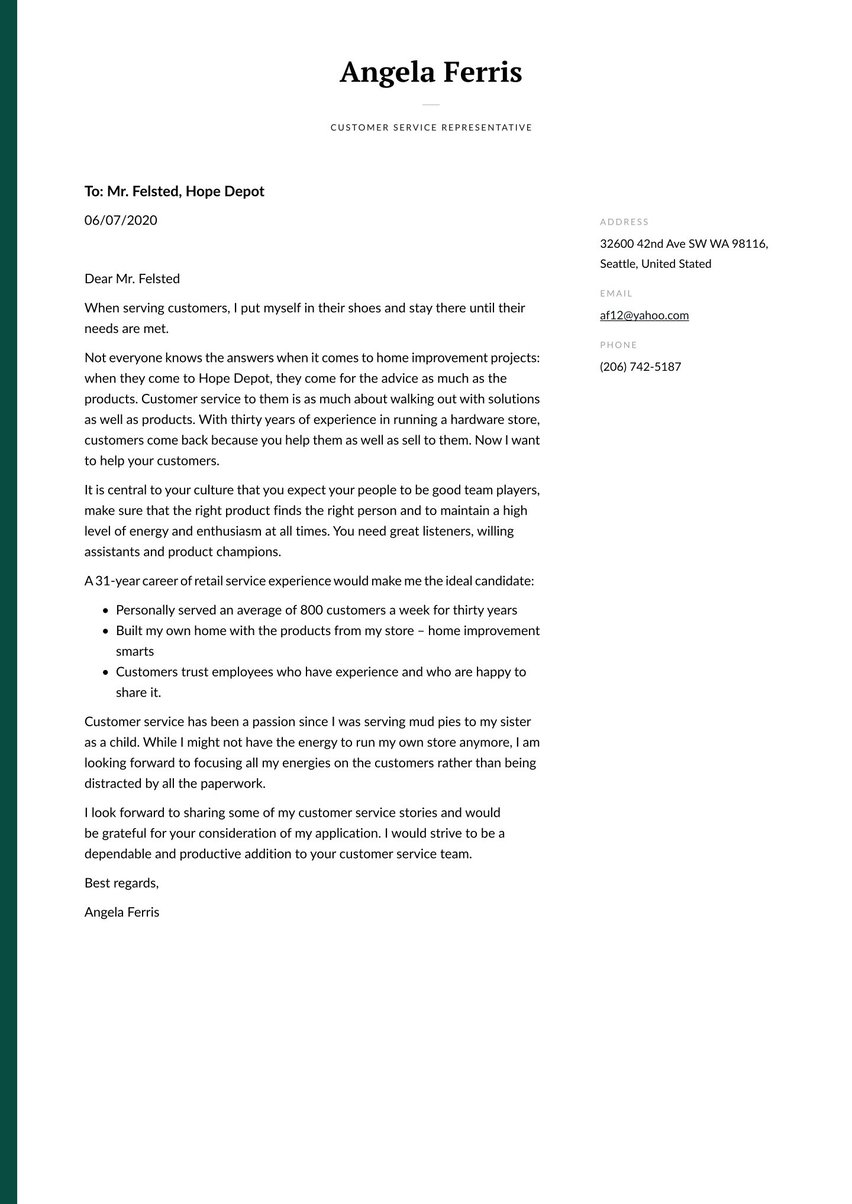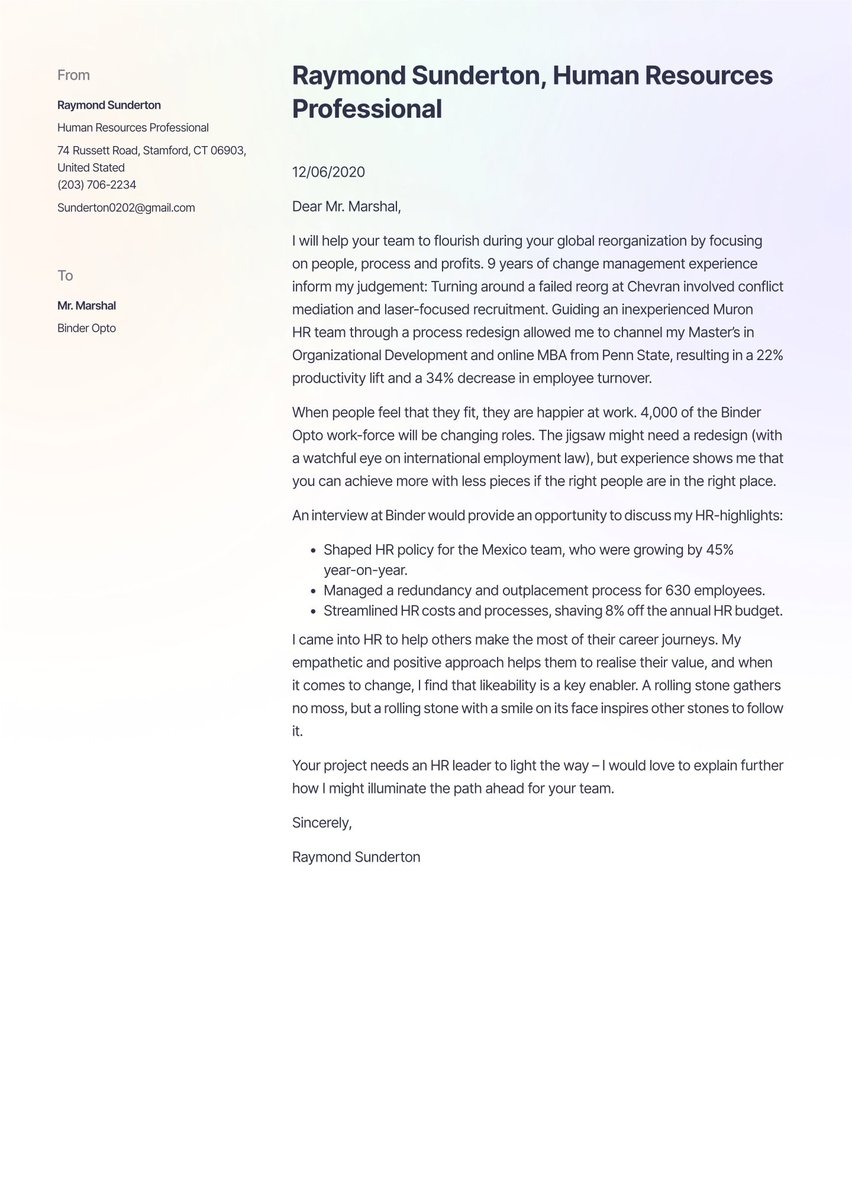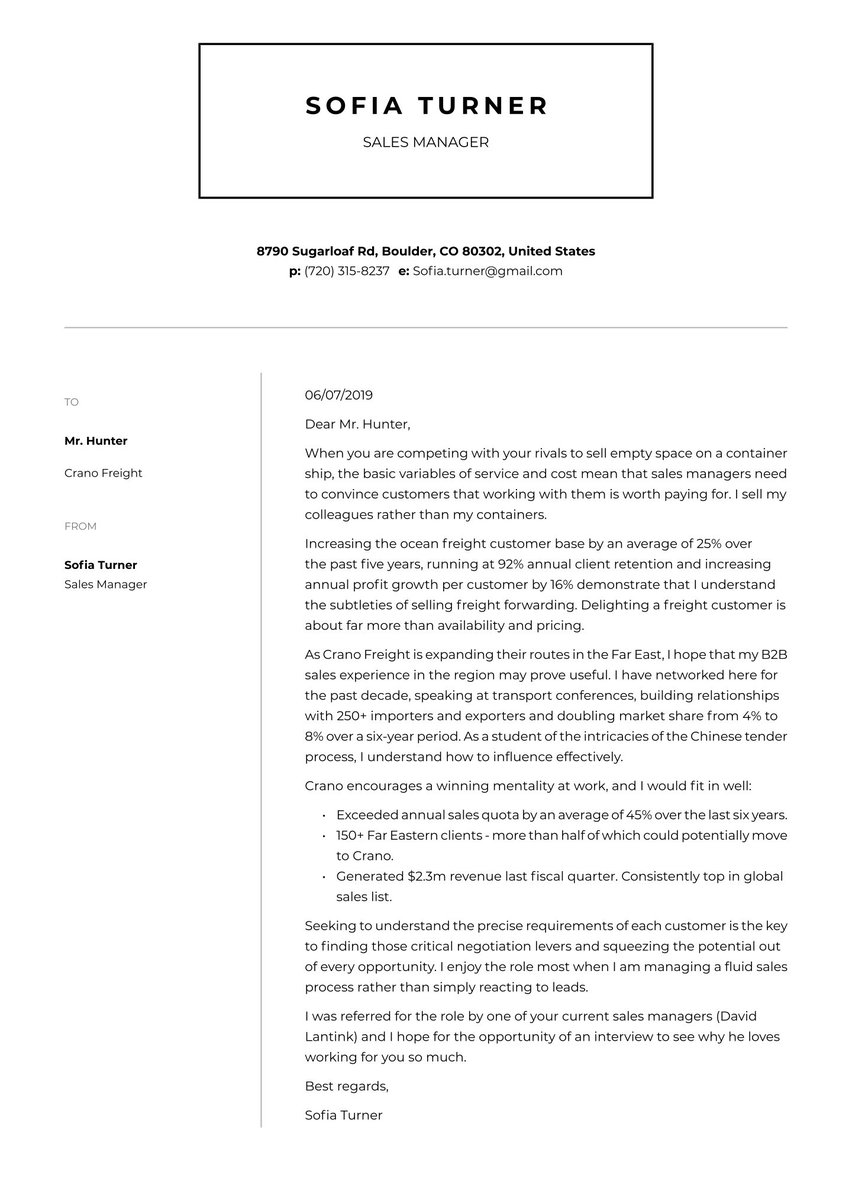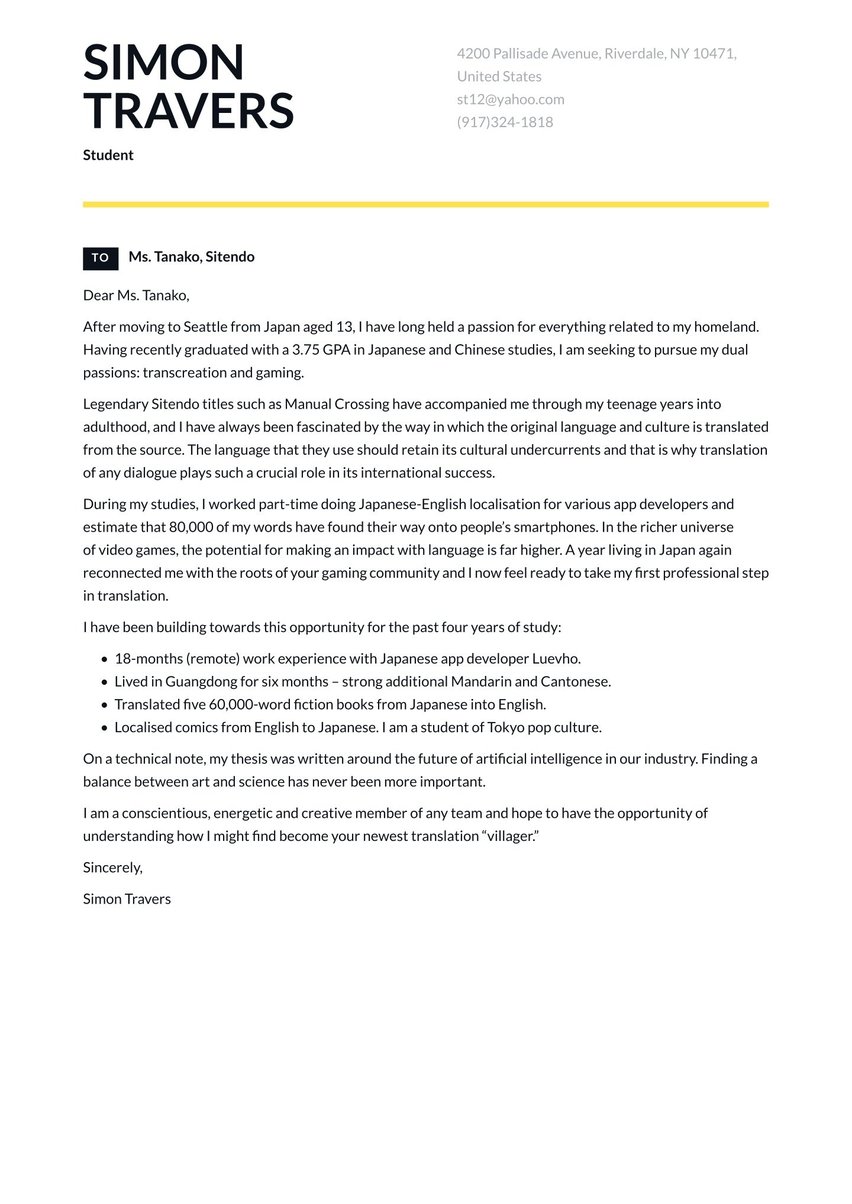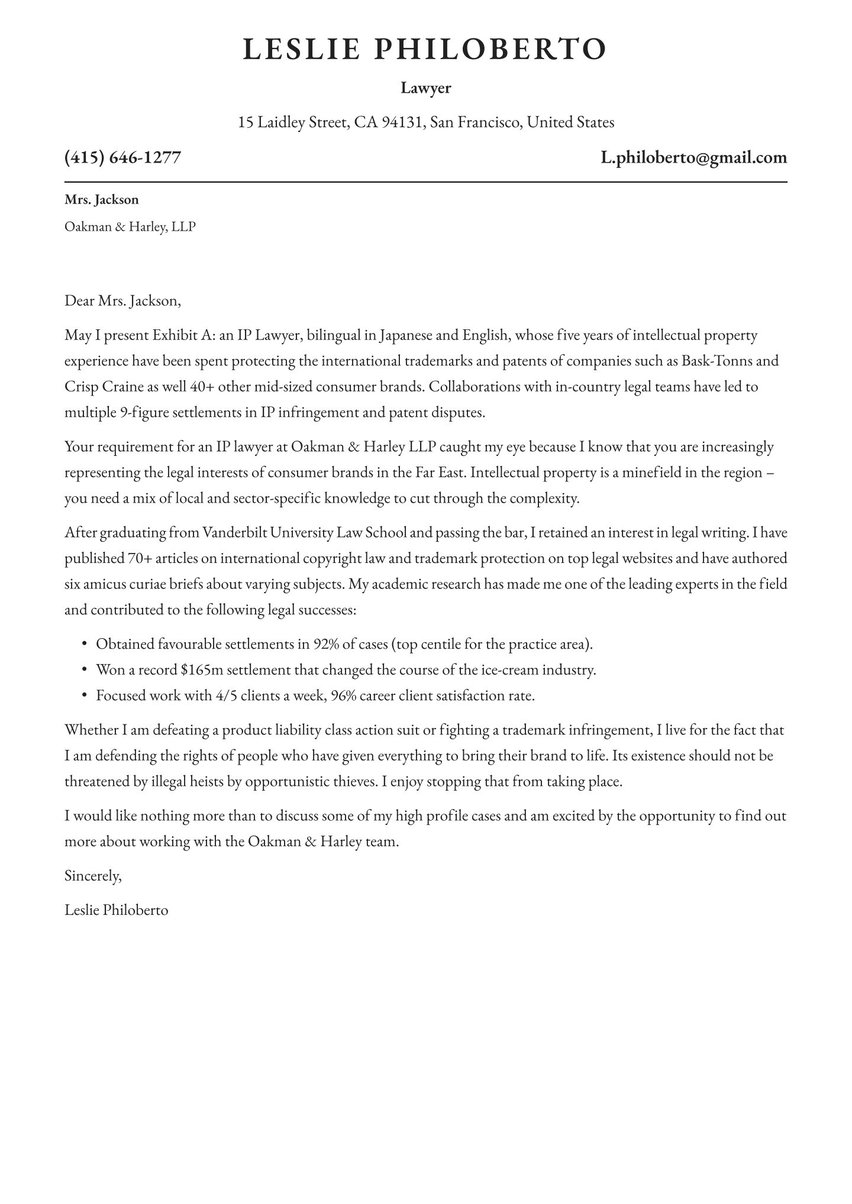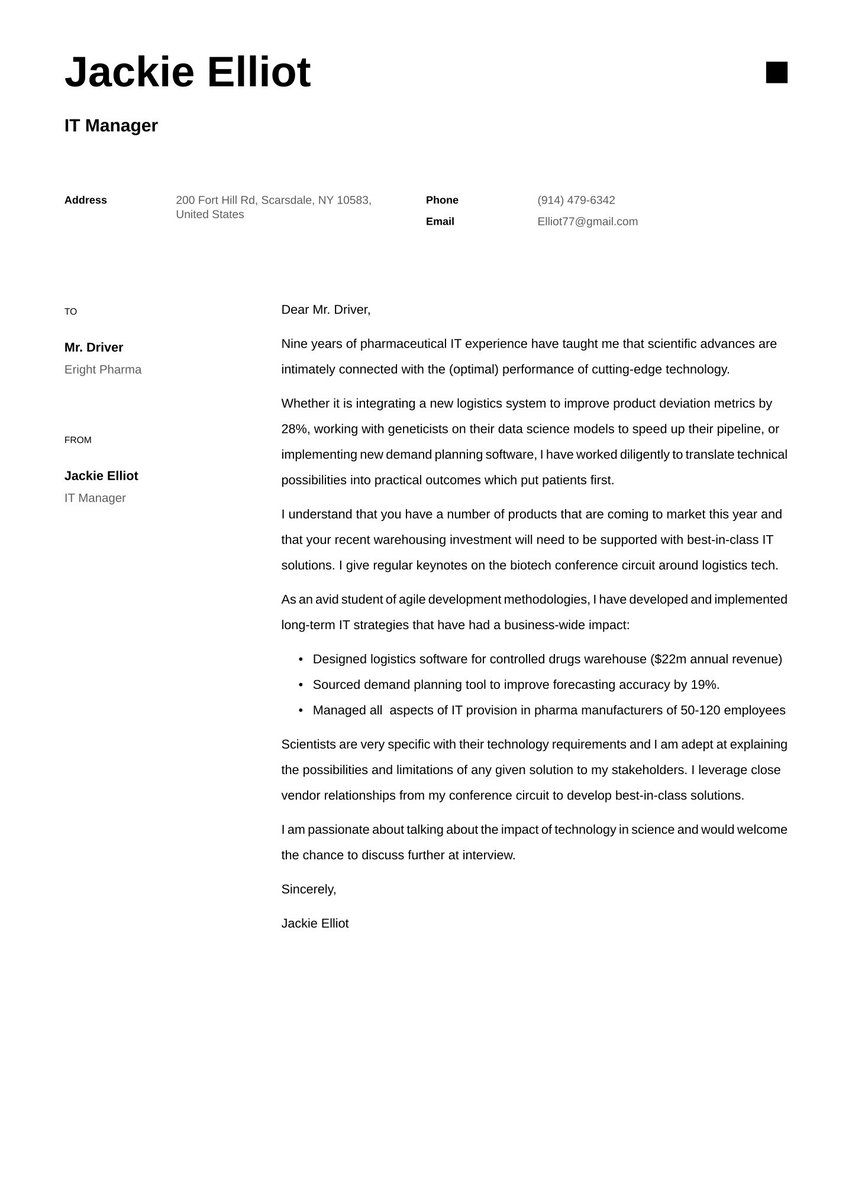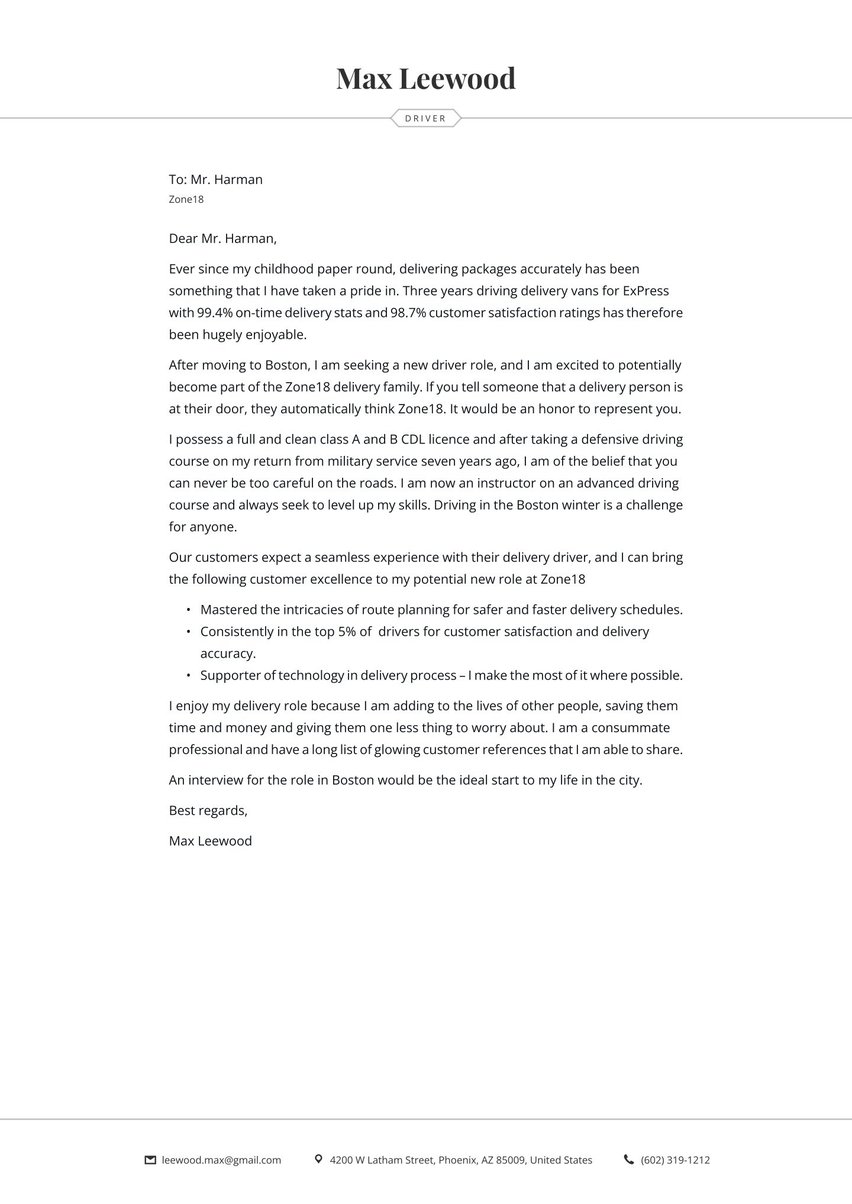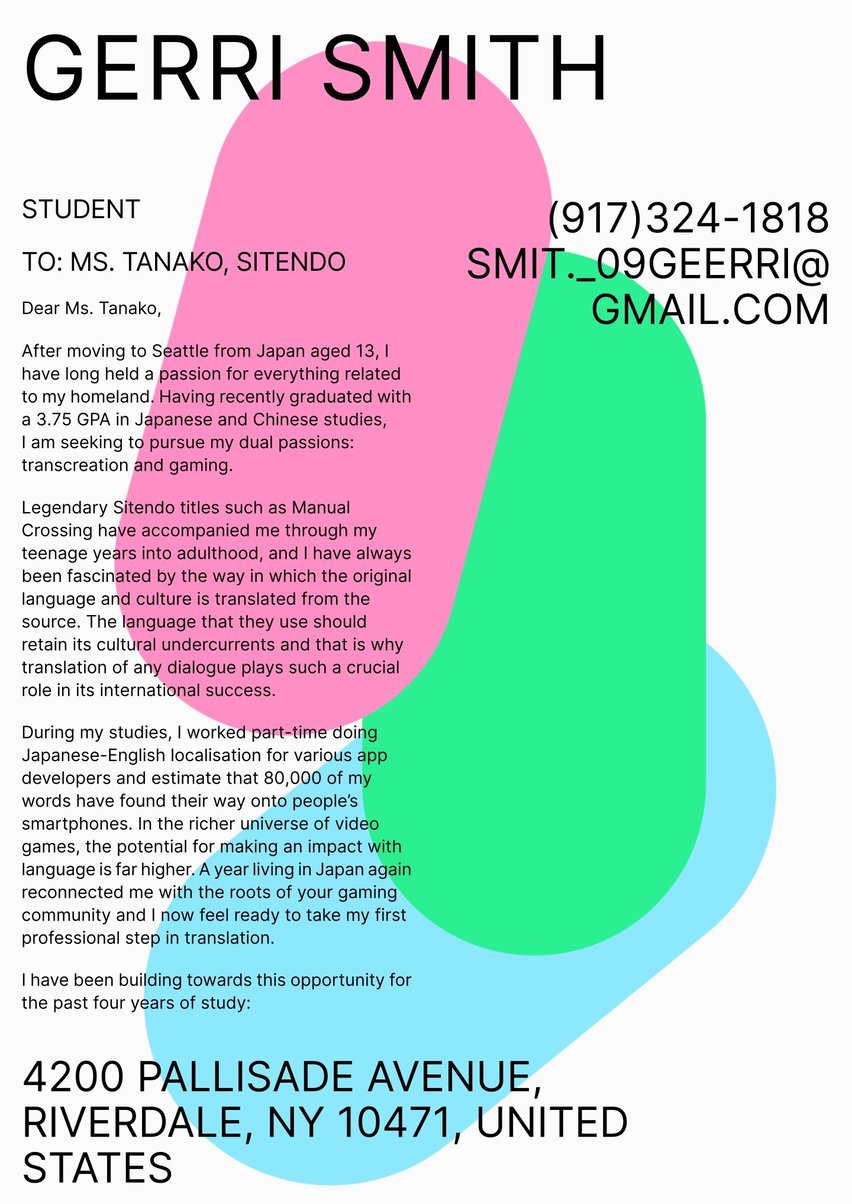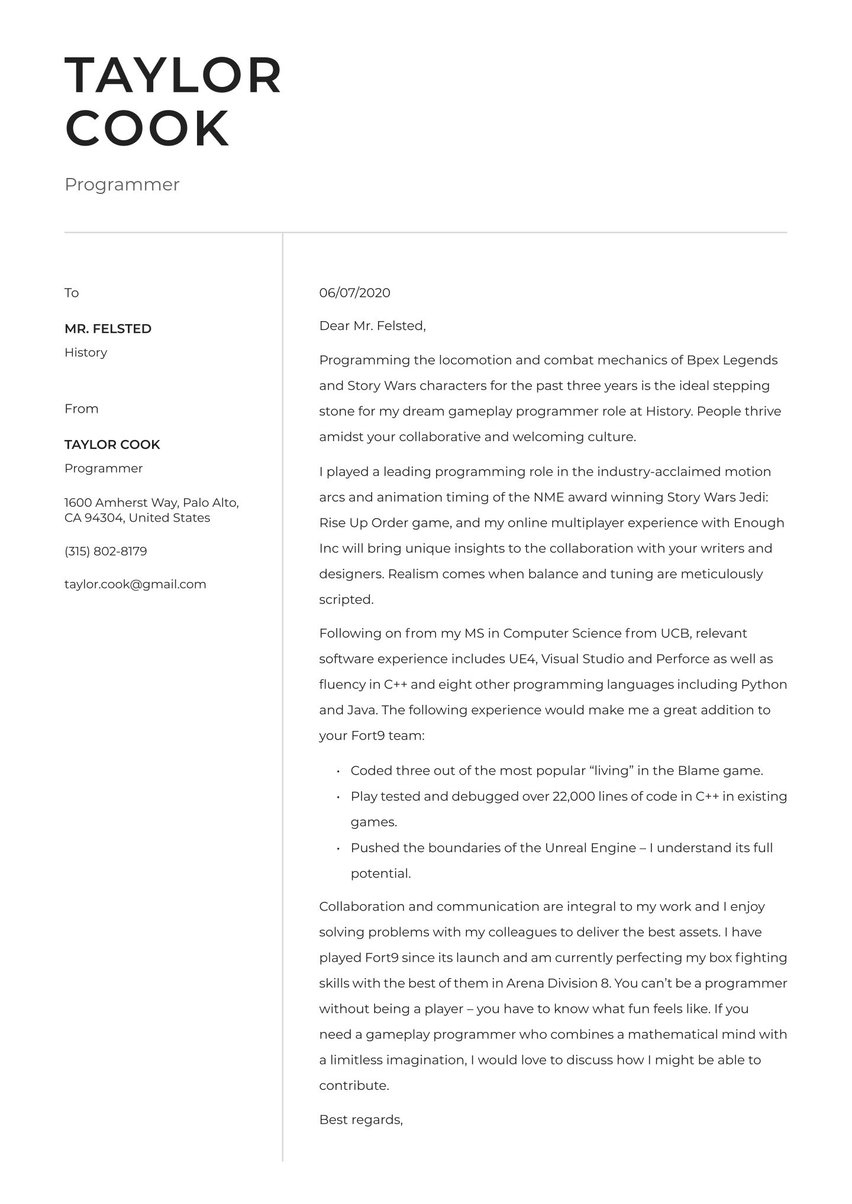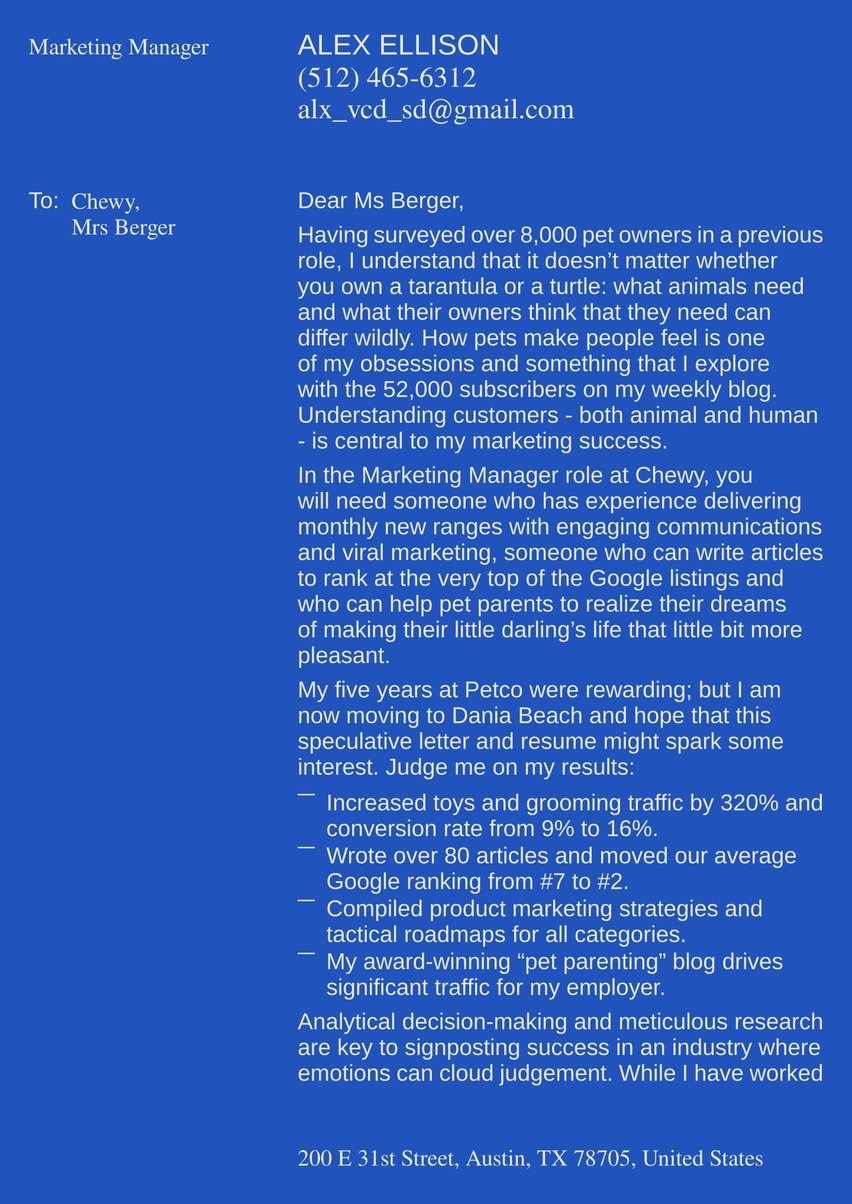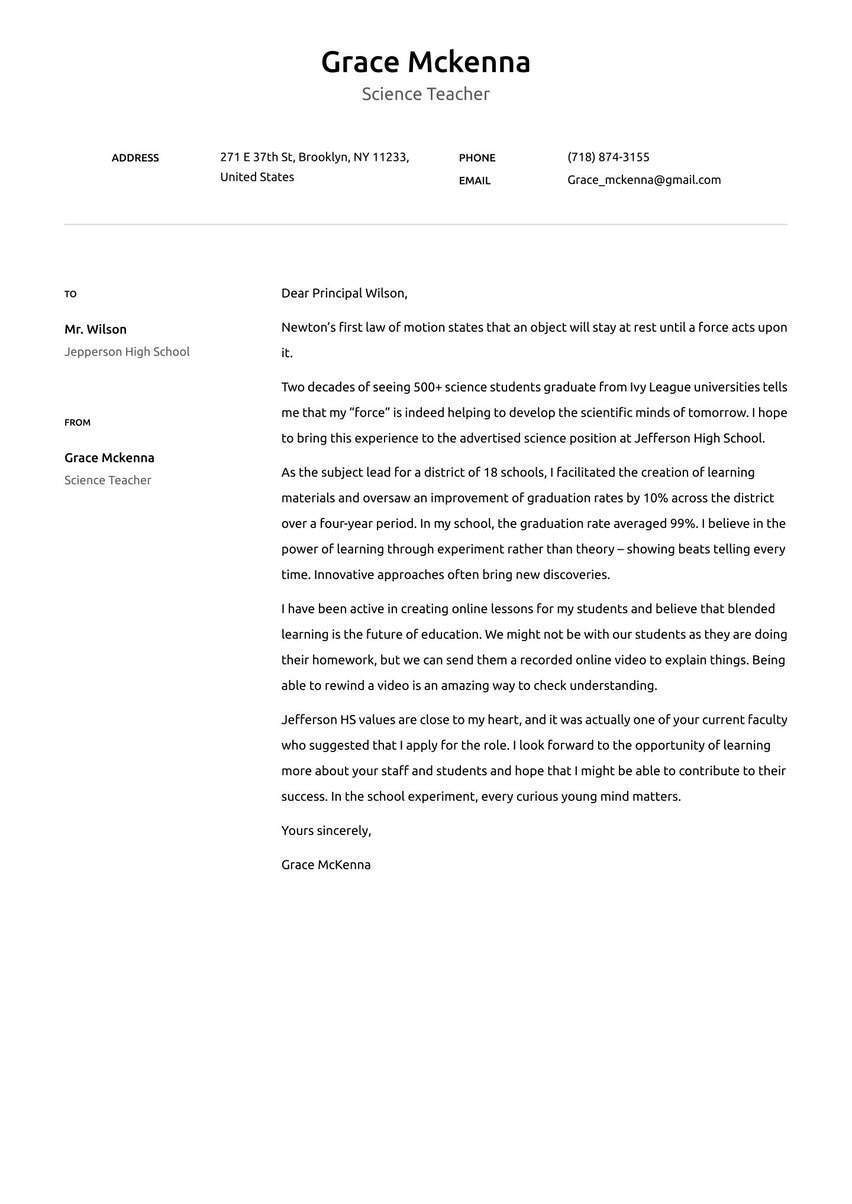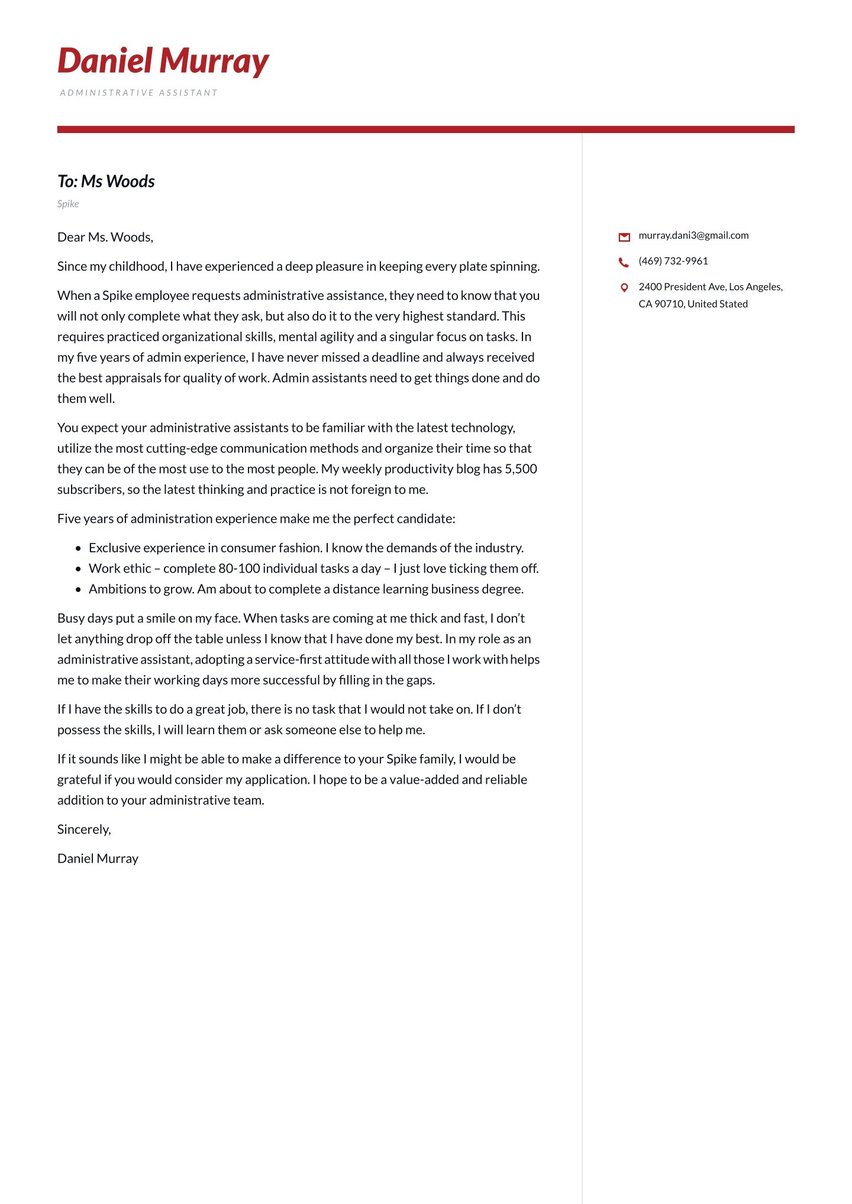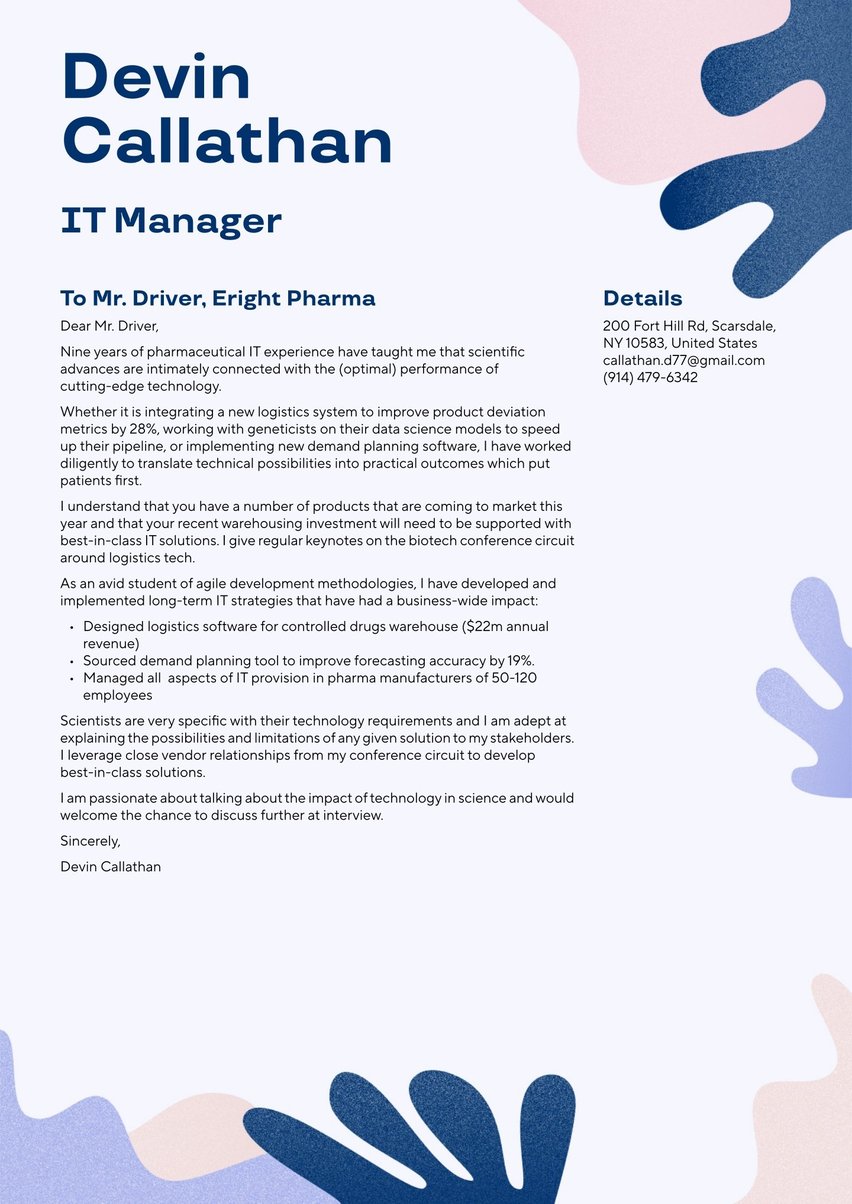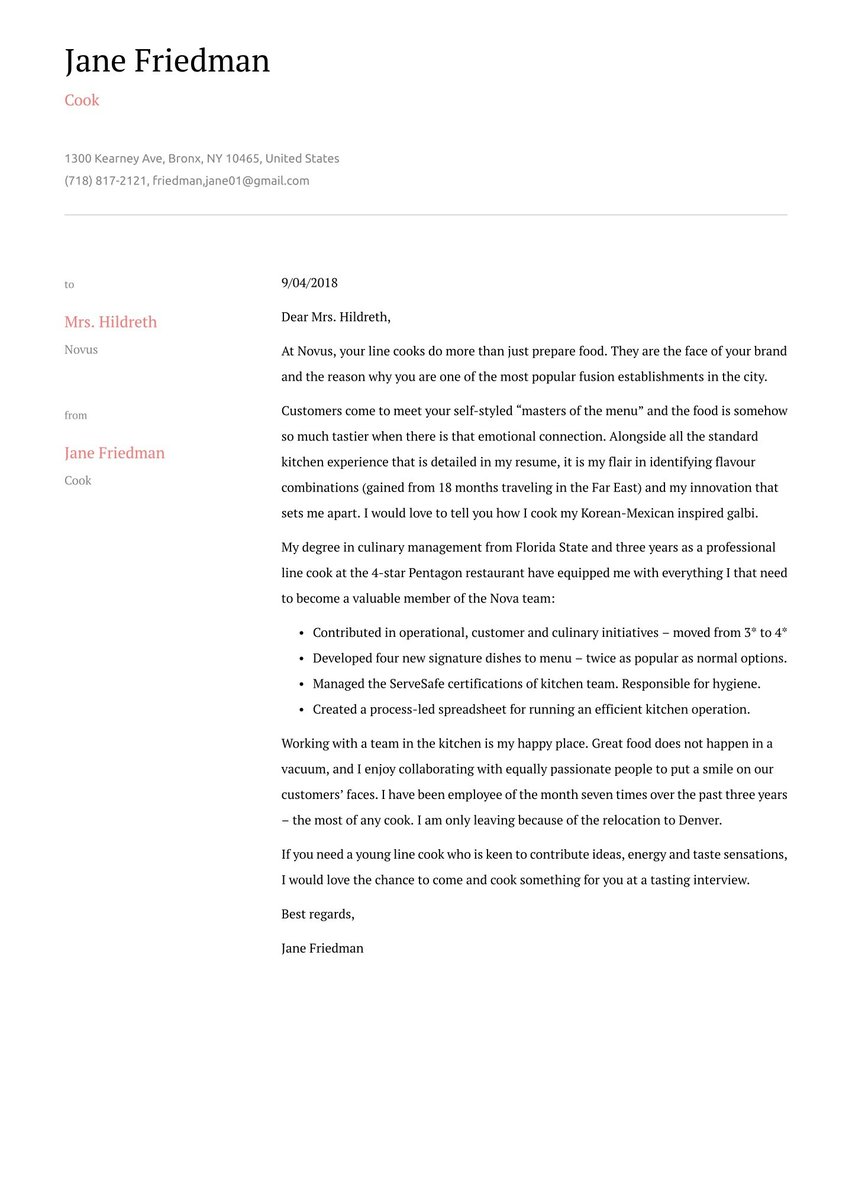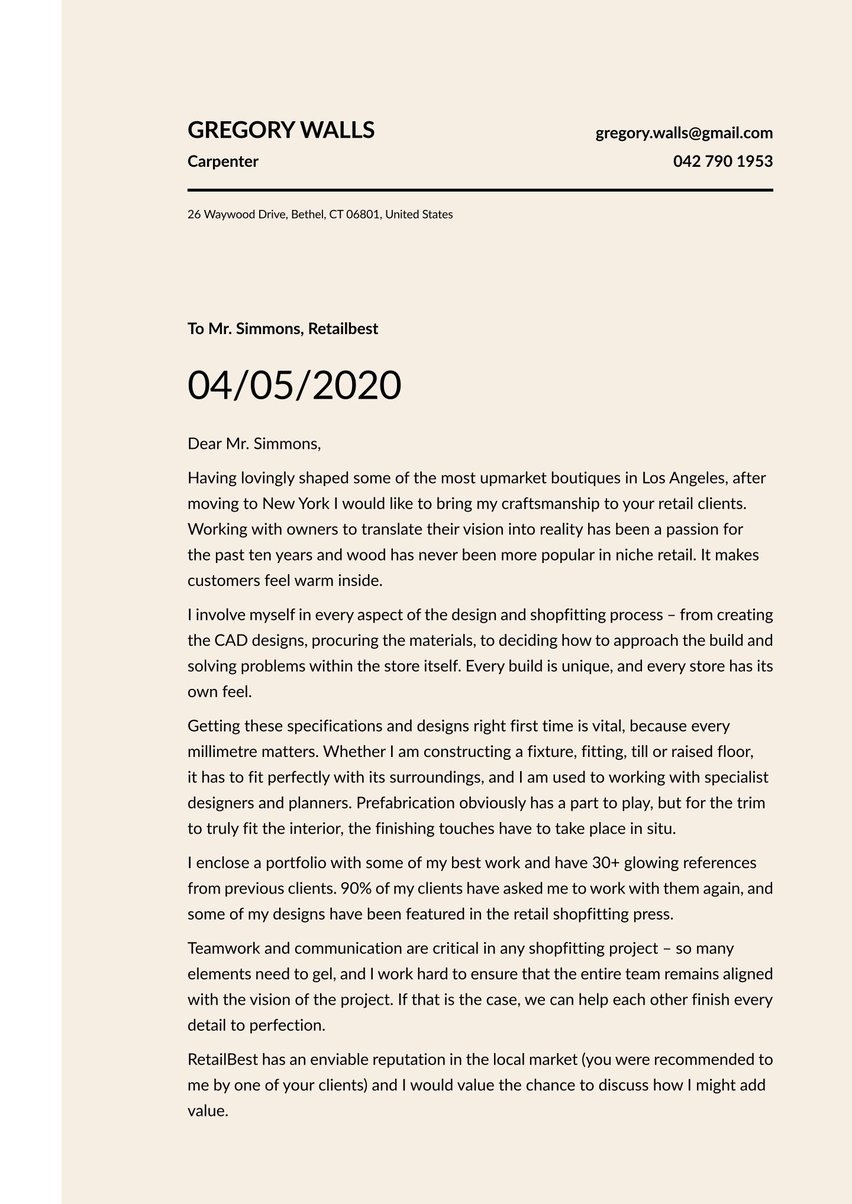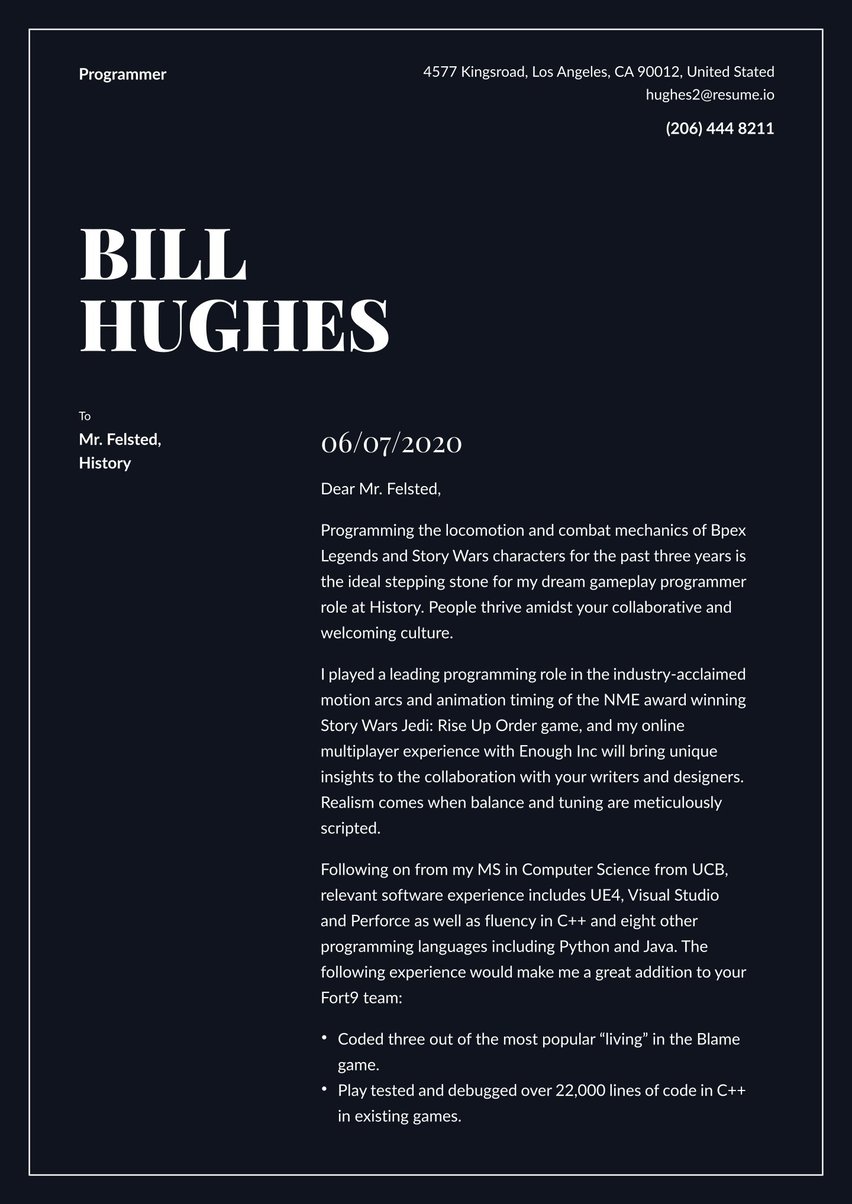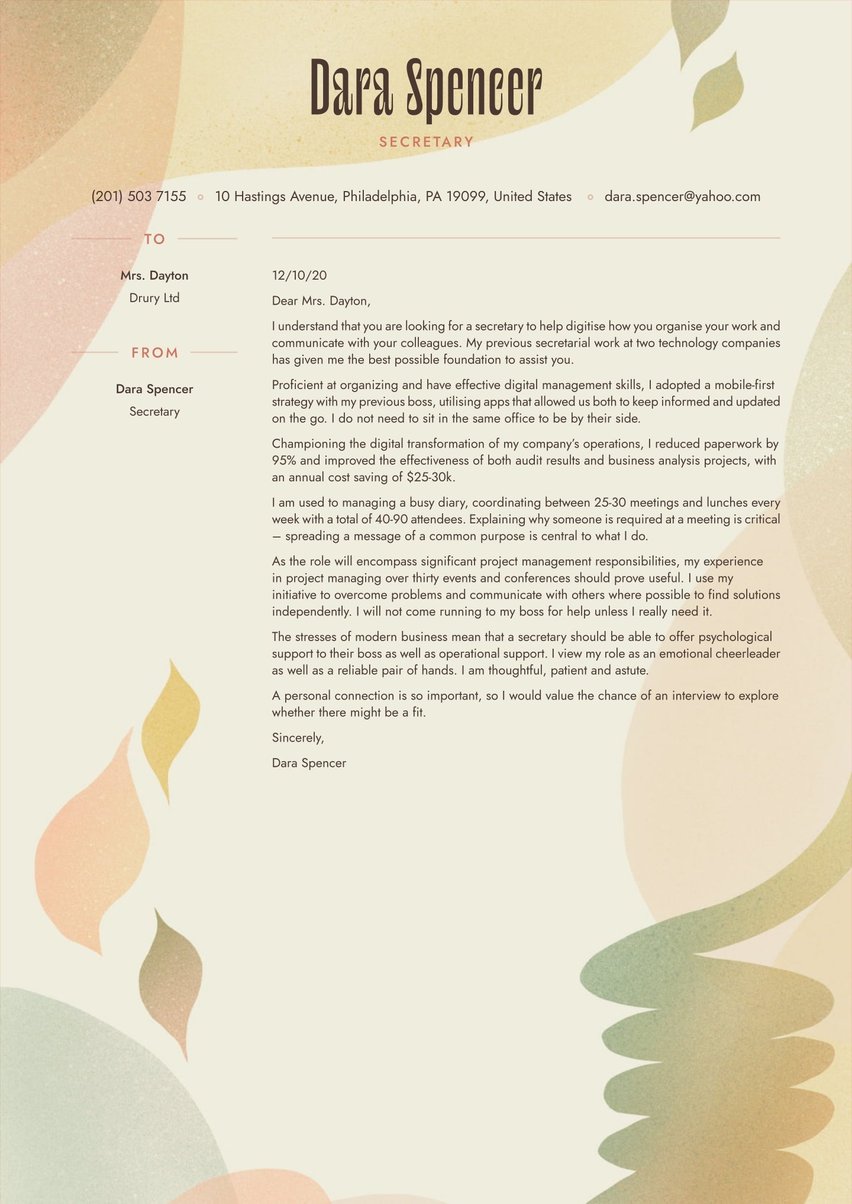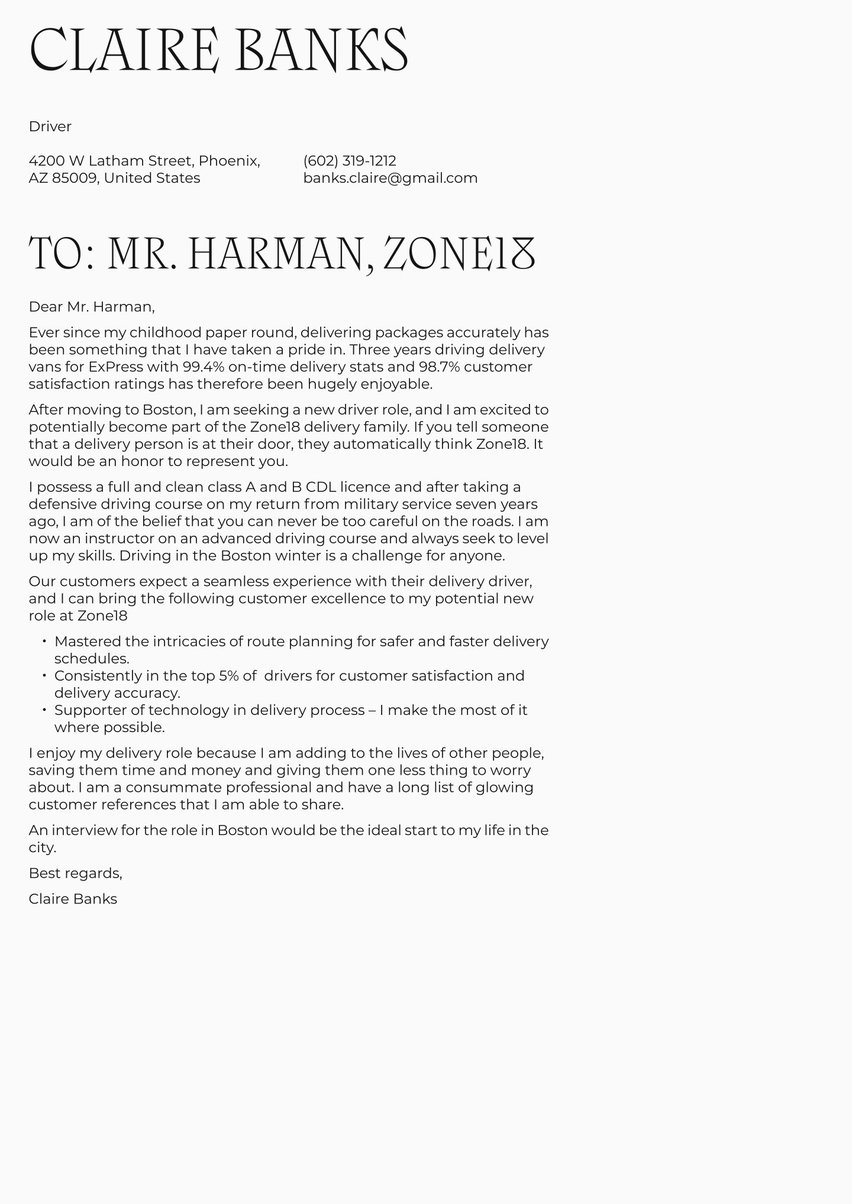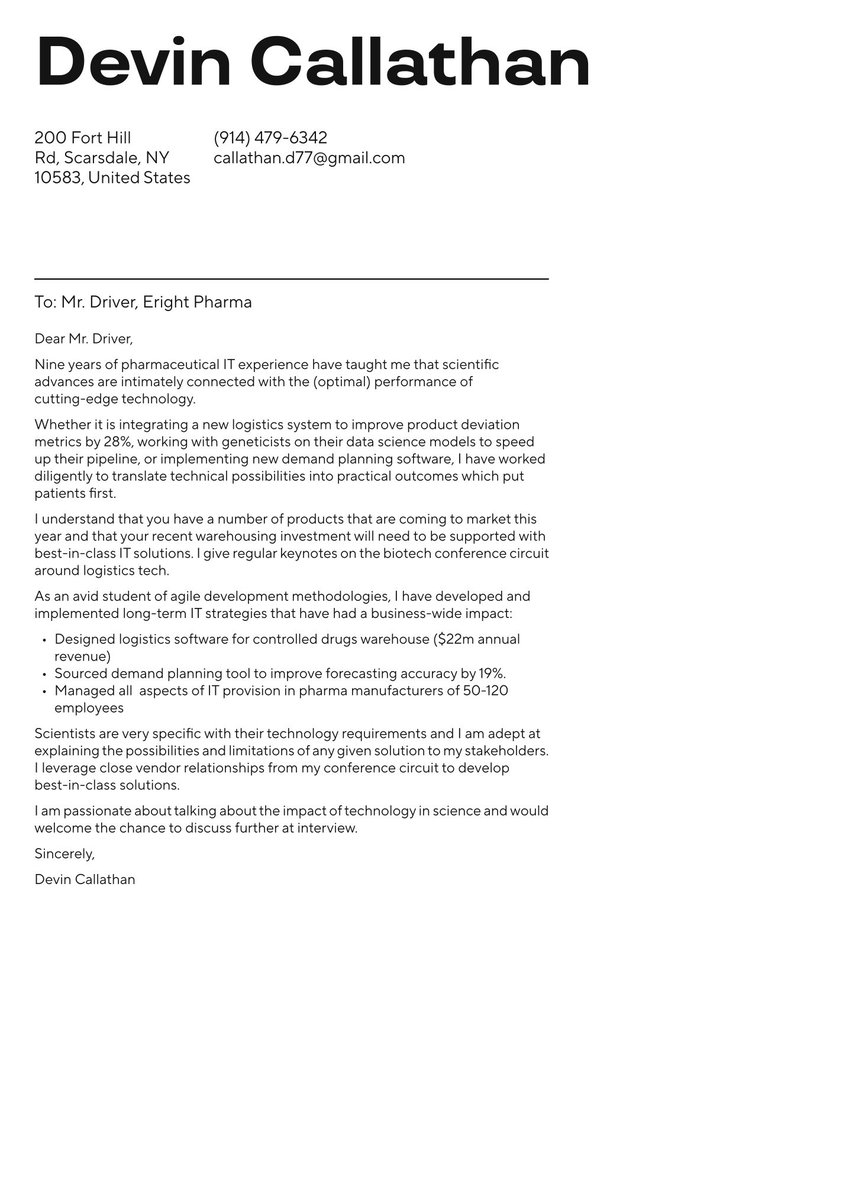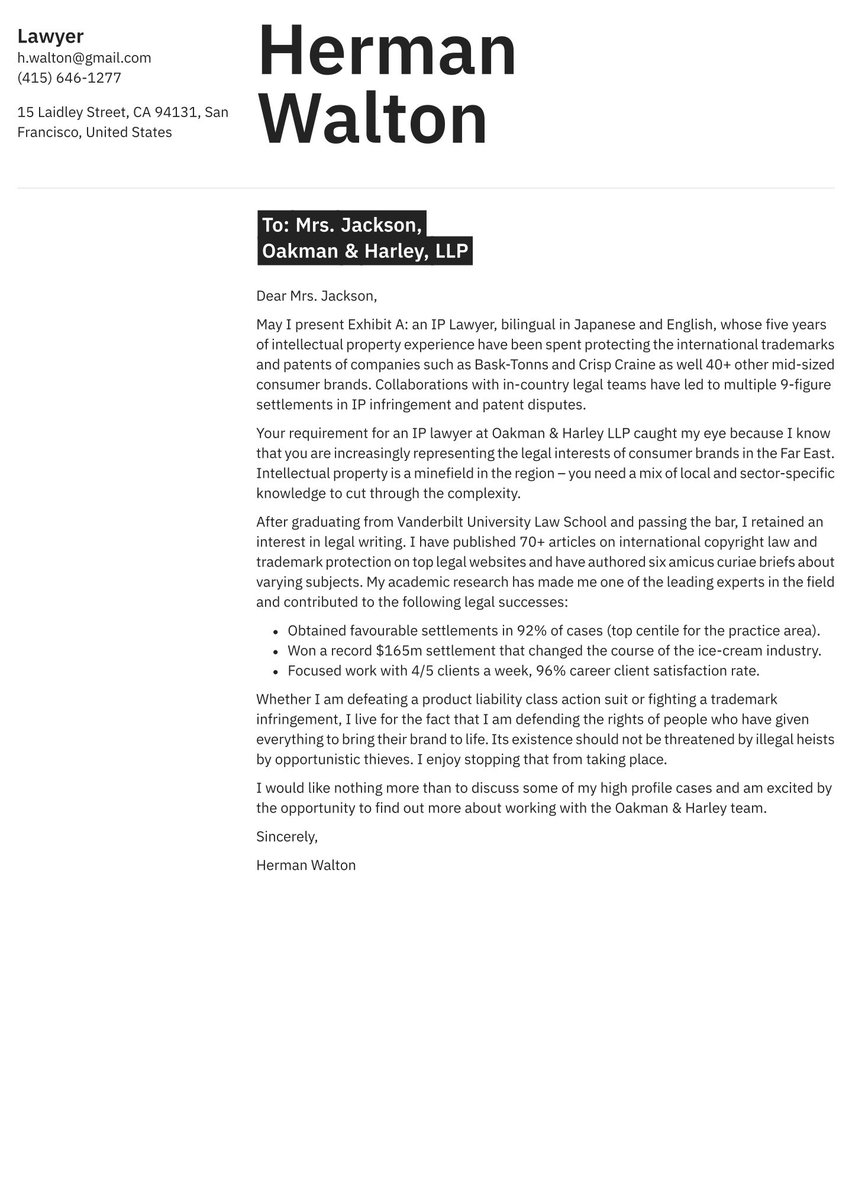Landing a job as an attorney is good news for your bank balance. The average salary for lawyers is a massive $127,990, according to a report from U.S. News. If litigation is your game, your career outlook looks bright. The Bureau of Labor Statistics projects that the sector will grow by 10% between 2021 and 2031. So, how can you get your next job?
At Resume.io, we have everything that you need to supercharge your job search. No matter where you are on the career ladder, we have the resources that will help you in your climb. In the following writing guide and corresponding attorney cover letter example, we will cover:
- How to write an attorney cover letter (with a cover letter example)
- Tips on how to boost the impact of each cover letter section
- What tone and approach to take when writing your letter
- How to structure your cover letter to put across your argument
- How to write an attorney cover letter if you have no experience
Looking for some more inspiration? Check out our library of cover letter examples to give you the rundown on what you need to include in your next application.
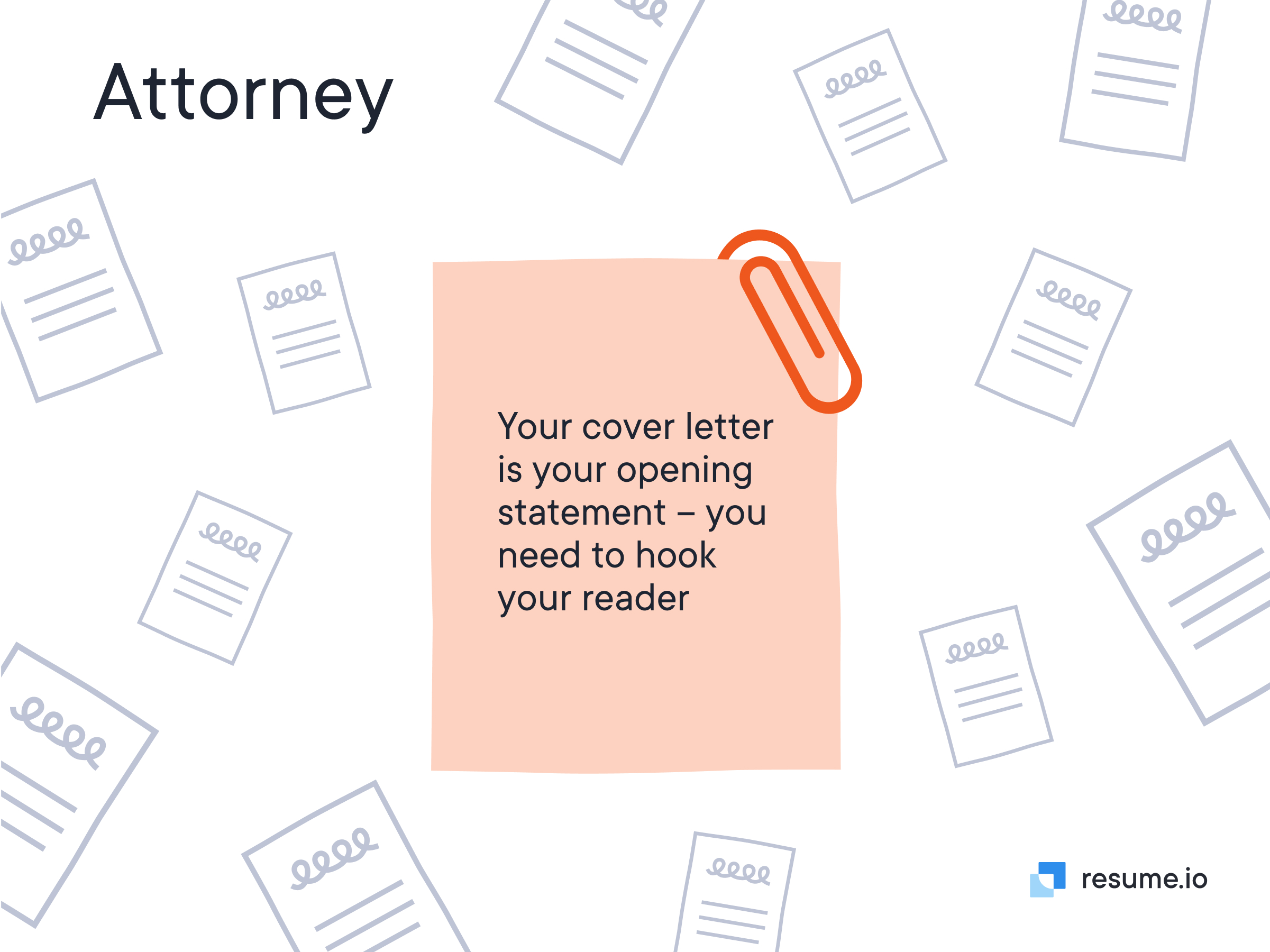
If you’re looking for some additional resources, we have you covered. Take a peek at our similar cover letter samples below now:
Best format for an attorney cover letter
In the courtroom, everything has a structure. You don’t simply rush into the room and start blurting out all of the reasons that your client is in the right. No, you have to follow the process. Your cover letter is the same. The format of an attorney cover letter should contain the following elements:
- The cover letter header
- The greeting/salutation
- The cover letter intro
- The middle paragraphs (body of the letter)
- The ending paragraph of your cover letter (conclusion and call-to-action)
Using the above structure means that you won’t miss any crucial piece of information. As you can see in our example, it’s important to make sure that the application follows a logical layout. You start things off by greeting the reader and explaining the main points of your argument. You then have the chance to elaborate on these further down the page.
If you’re entirely new to the world of cover letter writing, coming to grips with the standard structure will help you along the way. Hiring managers expect to see this format when you submit your application. Take a look at our in-depth cover letter guide for more details.
Dear Mr. Twill,
Providing strategic legal counsel to consumer goods companies who have international patent disputes is a fascinating area within IP litigation. Having lived and worked in China and Malaysia, I understand the issues from differing angles. If you have an attorney who can resolve complex international issues, favorable outcomes are guaranteed.
I grew my client portfolio by 34% over three years, taking on patent and trademark cases within the consumer goods, retail, and luxury goods industries. I have extensive experience with global clients, with a deep specialization in Far East sourcing disputes. I have learned Mandarin along the way and have a good appreciation of both the legal and cultural challenges involved.
In terms of my U.S.-based work, I am consistently featured in the top 100 lists of consumer goods attorneys and have worked on several high-profile cases within consumer electronics and durable goods. My understanding of the USPTO and Copyright Office processes, combined with my strong negotiation skills, resulted in a 95% success rate in resolving IP disputes. I enjoy working with small to medium businesses – more than half of my previous clients had a turnover of less than $25m.
While working in-house for Kale, my ability to analyze complex legal issues and develop creative solutions has resulted in a 30% reduction in outside counsel expenses for the employer. My preference is to work for an external law practice, but this experience offered a unique client-side perspective that now informs my decision-making.
I look forward to the opportunity of an interview to discuss how I might continue my track record of success at Hillingsley Froome. I am confident that many of your retail and consumer clients would benefit from my expertise.
Sincerely,
Harriet Jones
Cover letter header
The cover letter header is likely the first thing a hiring manager will see. It’s a formality but one that you have to observe. This line contains important details about you: your name, email, and phone number. While it may not be the most interesting part of your application, if the hiring manager wants to interview you, they will need this information.
Leave your flair for creativity at home when it comes to this part of your application. To make their job easier, use a plain font and space your cover letter header correctly. You don't want to put any barriers in the way when it comes to them reaching out to you.
Cover letter greeting
Next up, it’s time to say “hello” to the hiring manager. The legal field is highly professional. One misstep and you could land yourself in a whole load of bother. For that reason, the person reading your cover letter will expect all of the airs and graces here. Make sure that you get off on the right foot by addressing them in a formal and respectful manner.
If you happen to know the name of the hiring manager, you should use it here. Use their title and last name. For example, you might write “Dear Mr. Dereks” at the start of your cover letter. You’re not on first-name terms with the hiring manager and using a casual greeting may suggest that you think you are. Keep things professional, at all times.
Of course, you won’t always know the name of the decision-maker. If you’re in the dark, you should rely on an ambiguous greeting. For instance, you might write “Dear hiring team” or “Dear _____ department”. Avoid “To whom it may concern”, as it is old-fashioned.
Cover letter introduction
The cover letter introduction is your opening statement. It sets the scene for all that is to come in the rest of the document. The key to getting this part of your application right is concisely outlining your argument. You can expand on each of the parts later in the cover letter. Before you get started, ask yourself the following: what is my strongest argument?
Pick out two-to-three things that make you stand out from the crowd. It may be your exceptional legal mind, your high level of training, or your proven track record. You can touch upon each of these in your cover letter introduction. Don’t worry about going into too much detail here — you are merely giving the reader a taste of what’s to come.
Dear Mr. Twill,
Providing strategic legal counsel to consumer goods companies who have international patent disputes is a fascinating area within IP litigation. Having lived and worked in China and Malaysia, I understand the issues from differing angles. If you have an attorney who can resolve complex international issues, favorable outcomes are guaranteed.
Cover letter middle part (body)
The middle paragraphs of cover letters are where you can elaborate on each of the aforementioned points. You’ve set out what you will be covering already. The next part of the process is taking each of those points and providing some evidence for them.
For example, if you’ve stated that you have a “proven track record of successful cases,” why not expand on one or two of them? You might want to throw in an anecdote about one of your most high-profile cases and how you dealt with media attention while simultaneously supporting your client. Adding some color to the cover letter shows that you are more than just a box ticker. You have the humanistic side of the job down too.
A little name-dropping may go a long way — so long as you haven’t signed an NDA. If you’ve represented big clients in the past, don’t be afraid to shout about it and reference their names. When the reader sees this, they will remember your application over the competition. Keep in mind that you’re up against a sea of similar applicants. Anything that you can do to make your cover letter stand out from the crowd is a smart move.
There are many ways to tackle the middle part of your cover letter. The evidence you outline will depend largely on your career: What is it that makes you special? Why should the hiring manager pick you over all of the other candidates? Take the time to consider what skills or experiences you have in your arsenal that other applicants may be lacking.
I grew my client portfolio by 34% over three years, taking on patent and trademark cases within the consumer goods, retail, and luxury goods industries. I have extensive experience with global clients, with a deep specialization in Far East sourcing disputes. I have learned Mandarin along the way and have a good appreciation of both the legal and cultural challenges involved.
In terms of my U.S.-based work, I am consistently featured in the top 100 lists of consumer goods attorneys and have worked on several high-profile cases within consumer electronics and durable goods. My understanding of the USPTO and Copyright Office processes, combined with my strong negotiation skills, resulted in a 95% success rate in resolving IP disputes. I enjoy working with small to medium businesses – more than half of my previous clients had a turnover of less than $25m.
While working in-house for Kale, my ability to analyze complex legal issues and develop creative solutions has resulted in a 30% reduction in outside counsel expenses for the employer. My preference is to work for an external law practice, but this experience offered a unique client-side perspective that now informs my decision-making.
How to close an attorney cover letter (conclusion and sign-off)
Once you’ve stated your case, there’s nothing else left to do but to sign off. The final lines of your attorney cover letter need to make a big impact on the reader. It is the last thing they will remember. Reflect back on the strongest part of your argument and reaffirm it.
Aim to leave the reader wanting more. If you tell them everything there is to know about you as a professional, there will be nothing left to say at the interview. Where possible, try to pique their interest and hint that you have more information to share with them later.
You may also want to slide a Call to Action (CTA) into the mix. That means encouraging the reader to take action and get in touch with you. You could write the following: “I’d be happy to elaborate on my experience and knowledge in a formal interview setting.”
I look forward to the opportunity of an interview to discuss how I might continue my track record of success at Hillingsley Froome. I am confident that many of your retail and consumer clients would benefit from my expertise.
Sincerely,
Harriet Jones
Attorney cover letter with no experience
Are you a newcomer to the legal field? Everyone has to start somewhere. If you have just finished law school and you’re looking for your big break, here are some things to cover:
- Education. What did you cover in law school? What made you choose this educational pathway? Did any of your mentors leave a lasting impression?
- Volunteer work. Have you worked in a legal environment before now? Perhaps you have given your time voluntarily? Expand on your experiences here.
- Ethics. A professional attorney has a strong backbone of ethics. Now is the time to showcase yours. What is it that makes a “good lawyer,” in your opinion?
- Future goals. Where do you see yourself five years down the line? Is there a specific area of law that’s calling your name? Why are you passionate about it?
Getting your first job can be tough — we won’t beat around the bush. With that in mind, you need to use your persuasion skills to show a hiring manager you’re worth the risk.
Basic mistakes in an attorney application letter (and how to avoid them)
If you’ve got this far in our cover letter writing guide, you’ve clued up on how your application should look. However, before you send it off, there are some basic mistakes of which you need to be aware. Here are some of the key things that you need to avoid:
- Inconsistencies in your argument. Read your cover letter. Does everything add up? Do your claims make sense and, importantly, can you substantiate them? If there are any inconsistencies in there, it’s a red flag for the hiring manager.
- Spelling and grammatical errors. Attorneys are high-level professionals. These workers should not be making silly spelling mistakes. Proofread your cover letter ahead of sending it. You can also use a program, such as Grammarly, to help.
- Too much information. As a general rule, your cover letter should be no more than 300-400 words long. If you are prone to over-explaining yourself, you will need to do some heavy editing work here. Be prepared to cut things back, if needed.
Key takeaways
- Attorneys make a great salary in the U.S. and there are plenty of opportunities in this rapidly growing sector.
- You should make sure that your cover letter has a clear structure. Hiring managers expect to see the same format when reading applications.
- Kick things off with a few points that you plan to cover. You can expand on each of these as you write the body of your cover letter.
- Take all of the hassles out of the process by using our free cover letter templates.


